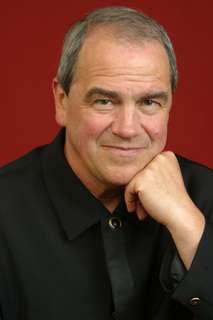|
Back
Revelling in Strauss' Many Moods Houston
Jones Hall
03/24/2011 - & March 26, 27, 2011
Richard Strauss: Don Juan, Op. 20 – Vier letzte Lieder – Don Quixote, Op. 35
Erin Wall (soprano), Wayne Brooks (viola), Brinton Averil Smith (cello)
Houston Symphony Orchestra, Hans Graf (conductor) 
H. Graf (© Christian Steiner)
The Houston Symphony's current program shows the orchestra at its best. This triptych of lush, picturesque Romanticism poses countless technical problems, but Graf and his orchestra are fearless and easily conquer every challenge. The direction from the podium is one of constant immediacy and energy, even in slow, soft passages, and the response from orchestra and soloists is immediate, unified and thoroughly engaging from first note to last.
Graf's Don Juan is bold, brassy and virile. Taut rhythms and dazzling brass playing kick off the proceedings, and the performance is forthright, unsentimental and thrilling. In the lyrical, romantic episodes, string and wind solos are finely wrought. Robert Atherholt's playing of the famous oboe solo is beyond reproach, combining gorgeous tone and phrasing. The heroic horn theme shows the section at their absolute best. Rhythmic repartee throughout is extremely tight, and Graf manipulates the numerous sudden tempo changes masterfully.
The statuesque Erin Wall, a singer new to me, sings the Vier letzte Lieder in a subtle Della Casa/Schwarzkopf style. Her initial low entry only gradually draws you in, but after the first glorious crescendo, she is mesmerizing. The diminuendo at the end of "September" shows breathtaking vocal control, with consistency of tone and intonation, tempered by a finely judged vibrato. Her voice dovetails magically into the ensuing horn solo. The second stanza of "Beim Schlafengehen" features a magnificently gradated crescendo, and the climactic melismas are genuinely hair-raising. Wall's dynamic range is enormous and, if she sometimes is less than ideally audible, her presence is still felt. She participates as a member of the ensemble, soaring effortlessly and operatically above Strauss' rich palette when called for, but also fearlessly singing with the nuances of the finest lieder recitalists. Graf accompanies flawlessly, matching Wall's ebbs and flows and coaxing gloriously warm sounds from his orchestra. The soft low brass in "Beim Schlafengehen" complement the section's bold playing in Don Juan, and the entire orchestra undulates and coalesces as one organic body. Particular impressive is the spot-on final chord of Im Abendrot, notoriously difficult to tune and balance, but perfectly placed by all.
Don Quixote is a tough piece to bring off, largely because of Strauss' innate ability to vary and develop his melodic material immediately upon presentation. The piece becomes a set of variations on variations, and can meander in the wrong hands. Not so here. Brinton Averil Smith, the orchestra's principal cellist, digs into the solo part with aplomb, and is matched by Wayne Brooks, whose full, rich sound balances Smith perfectly. Graf again wonderfully controls the multi-layered score, and the orchestra's rhythmic precision throughout makes sense of even the densest counterpoint and most abstruse harmonic juxtapositions. The tasteful incorporation of illustrations from the Cervantes Project at Texas A&M University keeps the listener abreast of Quixote's endeavors, and in this case more would be welcome. There is usually only one image per episode and, from such an in depth collection, it would be interesting (if perhaps more distracting) to see several different artists' renderings of these fantastic adventures accompany each variation.
In all, this is a thoroughly enjoyable program, one of the best this season. One simply can't ask for a program filled with more glorious music, all gloriously played.
Marcus Karl Maroney
|